Search
- Page Path
-
- HOME
- Search
- Review Article
- Nephrology (Genitourinary)
- Kidney complications associated with COVID-19 infection and vaccination in children and adolescents: a brief review
- Hee Sun Baek, Min Hyun Cho
- Clin Exp Pediatr. 2023;66(10):424-431. Published online June 28, 2023
-
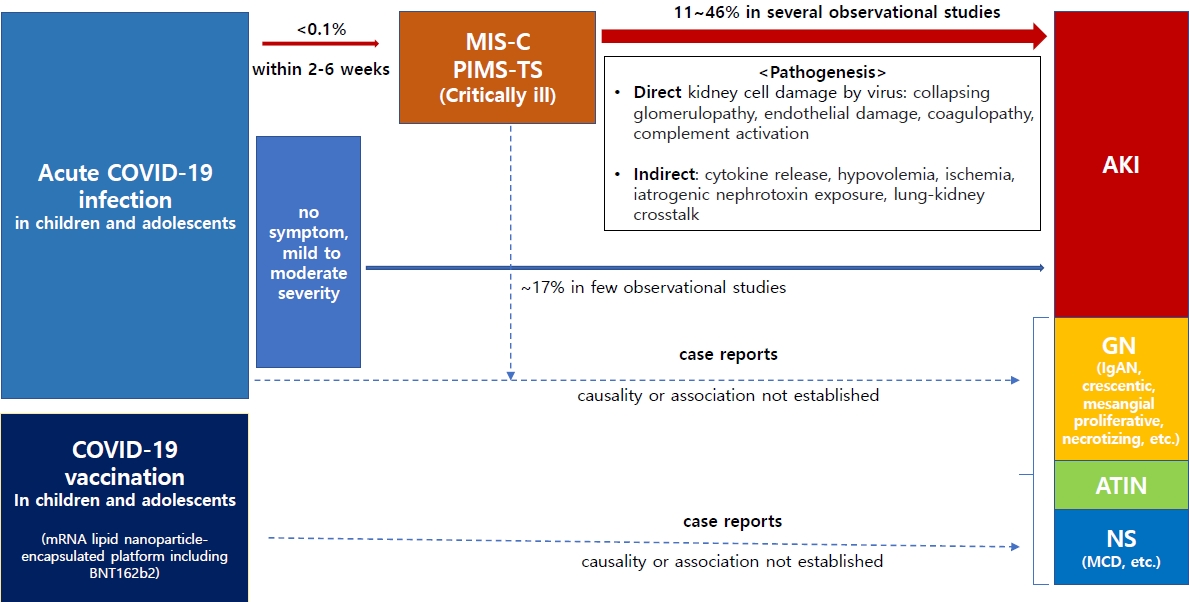
Several observational studies have shown that acute kidney injury affects up to 46% of children and adolescents who develop severe postinflammatory responses, such as multisystem inflammatory syndrome in childhood, due to coronavirus disease 2019 (COVID-19). Although causality has not been established, some cases of glomerulopathy or nephrotic syndrome occurring after COVID-19 infection or vaccination have been reported. Therefore, kidney complications associated with these conditions in children and adolescents warrant attention.
- Editorial
- Nephrology (Genitourinary)
- Hypertension in adulthood is programmed during the perinatal period
- Min Hyun Cho
- Clin Exp Pediatr. 2022;65(10):494-495. Published online August 12, 2022
-
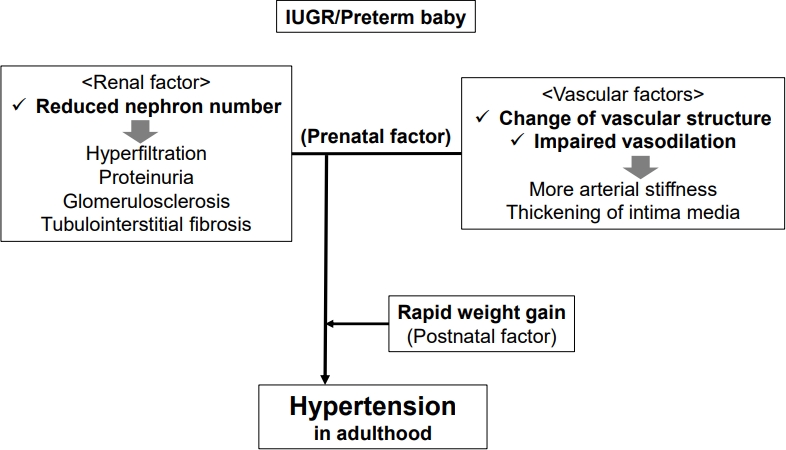
∙ Intrauterine growth restriction (IUGR) and preterm birth can be significant risk factors for the development of adult hypertension.
∙ Several perinatal factors of hypertension are related to IUGR, including renal, vascular, and rapid catch-up growth.
- Original Article
- Nephrology (Genitourinary)
- Variation in clinical usefulness of biomarkers of acute kidney injury in young children undergoing cardiac surgery
- Hee Sun Baek, Youngok Lee, Hea Min Jang, Joonyong Cho, Myung Chul Hyun, Yeo Hyang Kim, Su-Kyeong Hwang, Min Hyun Cho
- Clin Exp Pediatr. 2020;63(4):151-156. Published online February 5, 2020
-
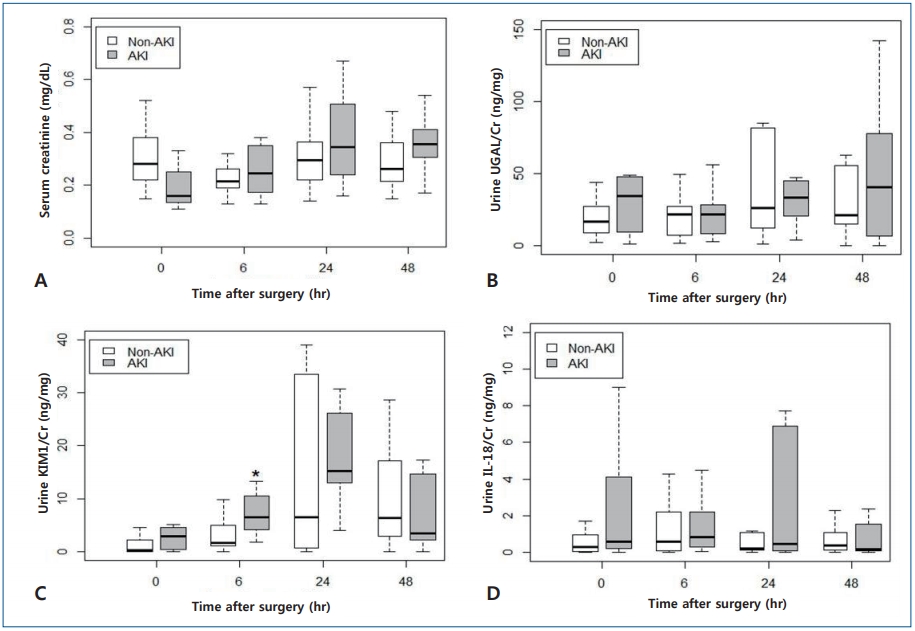
Question: Can clinical usefulness of biomarkers of acute kidney injury vary on the clinical circumstances?
Finding: In young children undergoing cardiac surgery, urine KIM-1/Cr level peaked at 24 hours with significant difference from baseline level and was significantly higher at 6 hours in the AKI group. However, urine NGAL/Cr and IL-18/Cr levels showed no specific trend with time for 48 hours after cardiac surgery.
Meaning: Urine KIM-1/Cr concentration could be considered a good biomarker for early AKI prediction after open cardiac surgery in young children.
- Editorial
- Nephrology (Genitourinary)
- Monitoring BK virus infection in pediatric kidney transplant recipients
- Min Hyun Cho
- Clin Exp Pediatr. 2019;62(11):414-415. Published online October 18, 2019
-
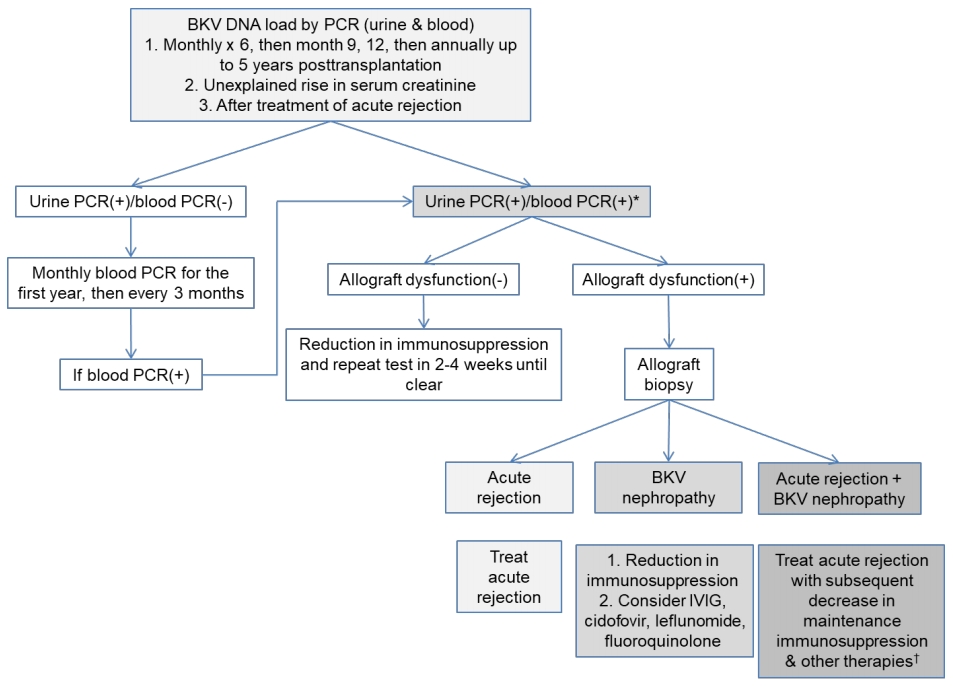
- Original Article
- Nephrology (Genitourinary)
- Renal involvement in children and adolescents with inflammatory bowel disease
- Hea Min Jang, Hee Sun Baek, Jung-Eun Kim, Ju Young Kim, Yeon Hee Lee, Hee Yeon Cho, Yon Ho Choe, Ben Kang, Byung-Ho Choe, Bong Seok Choi, Min Hyun Cho
- Clin Exp Pediatr. 2018;61(10):327-331. Published online September 12, 2018
-

Purpose: The incidence of inflammatory bowel disease (IBD) is rapidly increasing, and several reports have described the renal complications of IBD. We sought to evaluate the clinical manifestations of renal complications in children with IBD in order to enable early detection and prompt treatment of the complications. Methods: We retrospectively reviewed the medical records of 456 children and adolescents aged <20...
- Erratum
- Nephrology (Genitourinary)
- Erratum: Pediatric kidney transplantation is different from adult kidney transplantation
- Min Hyun Cho
- Clin Exp Pediatr. 2018;61(8):264-264. Published online August 15, 2018
-
- Review Article
- Nephrology (Genitourinary)
- Pediatric kidney transplantation is different from adult kidney transplantation
- Min Hyun Cho
- Clin Exp Pediatr. 2018;61(7):205-209. Published online July 15, 2018
-
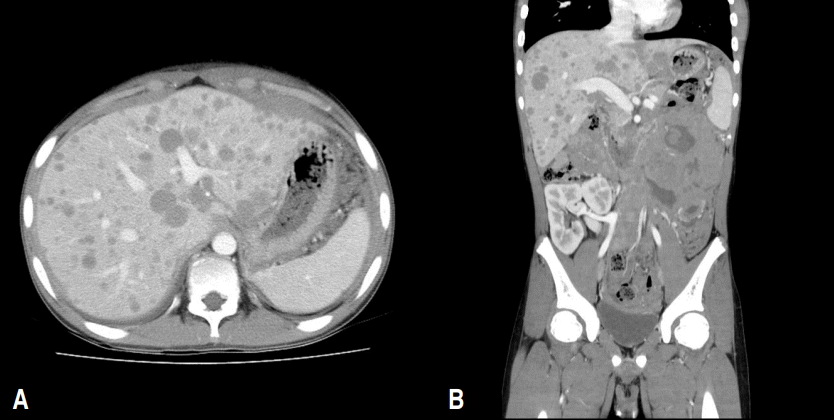
Kidney transplantation (KT) is the gold standard for renal replacement therapy in pediatric patients with end-stage renal disease. Recently, it has been observed that the outcome of pediatric KT is nearly identical to that in adults owing to the development and application of a variety of immunosuppressants and newer surgical techniques. However, owing to several differences in characteristics between children... -
DOI: https://doi.org/10.3345/kjp.2018.61.7.205 Correction in: Clin Exp Pediatr 2018;61(8):264
- Case Report
- Nephrology (Genitourinary)
- Deficiency of antidiuretic hormone: a rare cause of massive polyuria after kidney transplantation
- Kyung Mi Jang, Young Soo Sohn, Young Ju Hwang, Bong Seok Choi, Min Hyun Cho
- Clin Exp Pediatr. 2016;59(4):202-204. Published online April 30, 2016
-
A 15-year-old boy, who was diagnosed with Alport syndrome and end-stage renal disease, received a renal transplant from a living-related donor. On postoperative day 1, his daily urine output was 10,000 mL despite normal graft function. His laboratory findings including urine, serum osmolality, and antidiuretic hormone levels showed signs similar to central diabetes insipidus, so he was administered desmopressin acetate...
- Original Article
- Initial steroid regimen in idiopathic nephrotic syndrome can be shortened based on duration to first remission
- Hee Sun Baek, Ki-Soo Park, Hee Gyung Kang, Cheol Woo Ko, Min Hyun Cho
- Clin Exp Pediatr. 2015;58(6):206-210. Published online June 22, 2015
-
Purpose The use of a 12-week steroid regimen (long-term therapy, LT) for the first episode of idiopathic nephrotic syndrome (NS) reportedly induces a more sustained remission and lower relapse rate than previous regimens, including an 8-week steroid regimen (short-term therapy, ST). Here, we assessed the potential for selective application of 2 steroid regimens (LT vs. ST) based on the days to...
- Outcomes of chronic dialysis in Korean children with respect to survival rates and causes of death
- Hye Jin Chang, Kyoung Hee Han, Min Hyun Cho, Young Seo Park, Hee Gyung Kang, Hae Il Cheong, Il Soo Ha
- Clin Exp Pediatr. 2014;57(3):135-139. Published online March 31, 2014
-
Purpose Adult Korean patients on chronic dialysis have a 9-year survival rate of 50%, with cardiovascular problems being the most significant cause of death. The 2011 annual report of the North American Pediatric Renal Trials and Collaborative Studies group reported 3-year survival rates of 93.4% and relatively poorer survival in younger patients.
Methods In this study, we have reviewed data from Korean Pediatric...
- Review Article
- Clinical approach to quality of life in children with end-stage renal disease
- Min Hyun Cho
- Clin Exp Pediatr. 2013;56(8):323-326. Published online August 27, 2013
-
Quality of life in addition to various medical problems in children with end-stage renal disease (ESRD) should be objectively assessed to accomplish normal growth and development during childhood. However, unfortunately, studies of quality of life (QoL) in children with ESRD have been not popular yet and there are only fewer suitable assessment tools compared with adults. Recently, disease-specific modules to...
- Case Report
- Polyclonal gammopathy related to renal bleeding in a peritoneal dialysis patient
- Eun-Mi Cho, Hye-Hyun Moon, Young-Ju Hwang, Seung-Jin Lee, Cheol Woo Ko, Min Hyun Cho
- Clin Exp Pediatr. 2013;56(7):304-307. Published online July 19, 2013
-
Polyclonal gammopathy represents the diffuse activation of B cells and is usually related to inflammation or immune-related diseases. However, the mechanisms leading to polyclonal gammopathy are essentially speculative. Generally, infectious, inflammatory, or various other reactive processes may be indicated by the presence of a broad-based peak or band in the gamma region on serum protein electrophoresis results. A 15-year-old girl,...
- Secondary renal amyloidosis in a 13-year-old girl with bronchiectasis
- Eun Ae Yang, Dong Won Lee, Myung Chul Hyun, Min Hyun Cho
- Clin Exp Pediatr. 2010;53(7):770-773. Published online July 31, 2010
-
A 13-year-old girl was diagnosed with non-cystic fibrosis (CF)-related multifocal bronchiectasis accompanied by nephrotic-range proteinuria of unknown cause. On renal biopsy, there were many segmental homogeneous deposits of amyloid tissue with positive Congo red staining in the glomeruli and interstitium. On electron microscopy, relatively straight, non-branching, randomly arranged amyloid fibrils were showed in the mesangium of the glomeruli. These fibrils...
- Review Article
- Renal fibrosis
- Min Hyun Cho
- Clin Exp Pediatr. 2010;53(7):735-740. Published online July 31, 2010
-
Renal fibrosis, characterized by tubulointerstitial fibrosis and glomerulosclerosis, is the final manifestation of chronic kidney disease. Renal fibrosis is characterized by an excessive accumulation and deposition of extracellular matrix components. This pathologic result usually originates from both underlying complicated cellular activities such as epithelial-to-mesenchymal transition, fibroblast activation, monocyte/macrophage infiltration, and cellular apoptosis and the activation of signaling molecules such as...
- Original Article
- Diagnostic limitation and usefulness of 99mTc-DISIDA hepatobiliary scanning on neonatal cholestasis
- Jung Mi Kim, Byung-Ho Choi, You Cheol Jang, Ki Won Oh, Min Hyun Cho, Kyung Hee Lee, Jin-Young Park, Heng Mi Kim
- Clin Exp Pediatr. 2006;49(7):737-744. Published online July 15, 2006
-
Purpose : To assess the usefulness of 99mTc-DISIDA scanning in the early evaluation of neonatal cholestasis and to verify the diagnostic value of this test in the differential diagnosis of biliary atresia. Methods : DISIDA scannings were performed and analyzed in 87 children(58 males and 29 females; age, 18-139 days, mean, 59.1 days) with neonatal cholestasis. Five groups according to the... -
-

-
-

-

-
Impact Factor4.2
-
6.52022CiteScore92nd percentilePowered by







